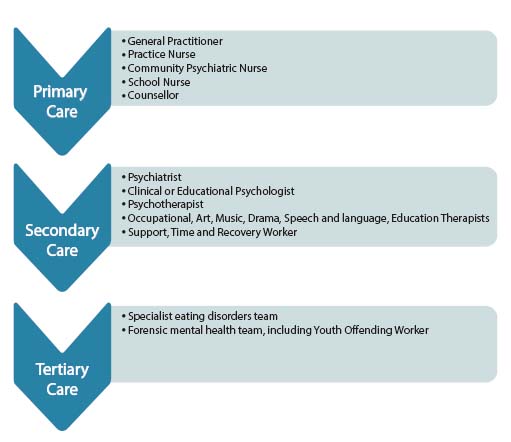2 Professional approaches
There can be a surprising range of professions and practitioners involved in helping young people with mental health problems. The next activity will get you thinking about what you already know.
Listen to this interview of a parent talking about their child’s mental health and the different professionals that can provide a supporting role.
Transcript: Audio 2: Providing a supportive role.
Activity 4: A range of professions
How many types of practitioner (or professions) work in the mental health field? Have a look at the list here and tick one that you feel most confident about. This is a polling tool, which will feed your inputs into a larger picture of all the learners engaged in this course.
Reflect on the following: which was the first type of practitioner or profession that came to mind, and why do you think they were the first one that you thought of?
Discussion
Your response to this activity will depend very much on your own experiences. Did anything surprise you in the poll results? How did your responses compare to those of your fellow learners?
Have a look at Figure 5 below for a summary of the professions and teams that can be involved.
Primary care is usually the first point of contact for people when they become unwell, for instance, when they experience symptoms that are of concern to themselves or others. Primary care is also usually the ‘gateway’ to receiving more specialised care.
Secondary care is for someone who has received primary care and is referred to the next level of care. These services are usually consultant-led (with a psychiatrist as the clinical lead) and include mainstream out-patient services like Child and Adolescent Mental Health Services (CAMHS), as well as in-patient psychiatric units.
Tertiary care is for someone who requires a highly specialised team of professionals. This may involve someone being treated by an eating disorders team (e.g. in an in-patient unit for people with severe eating disorders) or in a forensic mental health facility (i.e. in a facility treating offenders who have severe and enduring mental health problems). You will recall a parent describing the route through which her daughter was able to receive the support she needed for her mental health in Audio 2. This included a GP consultation followed by therapeutic counselling.


